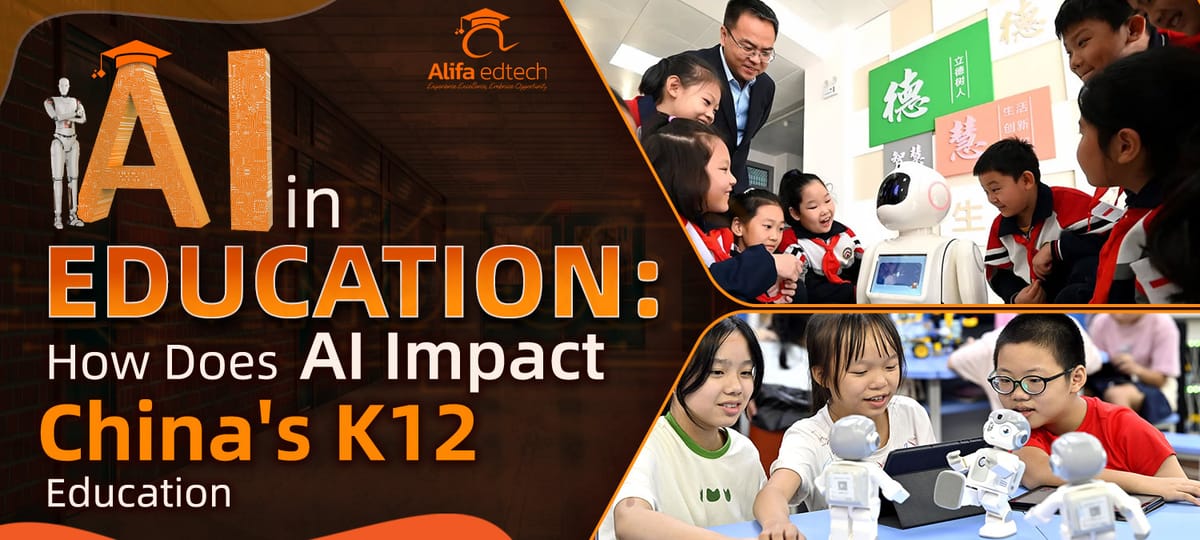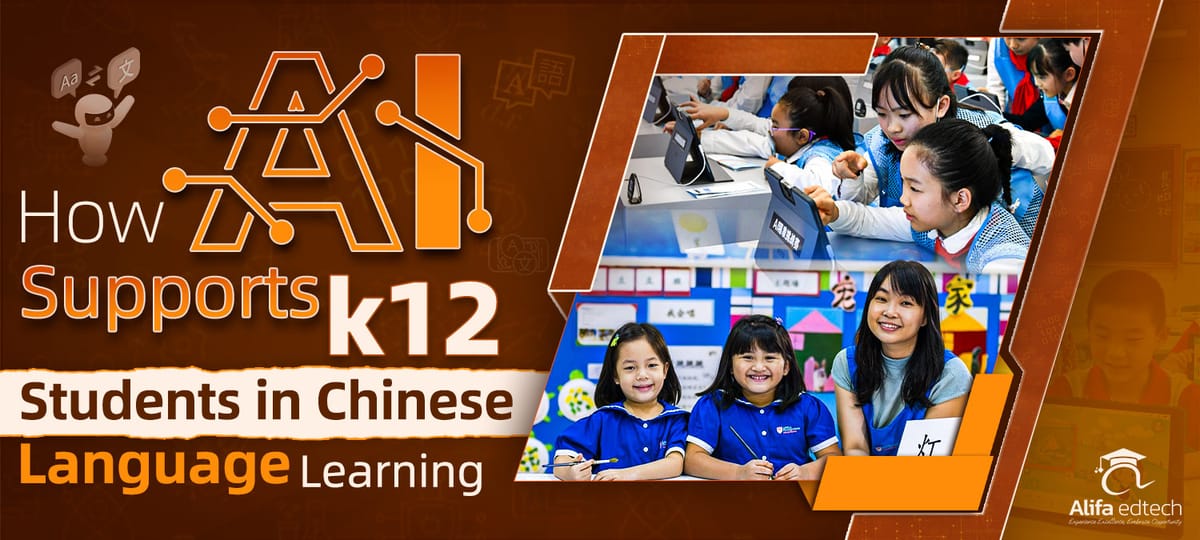Introduction
AI in Classrooms is becoming a powerful tool in Chinese K-12 education. Schools across China are now using artificial intelligence to improve how students learn and how teachers teach. AI helps track student progress, gives quick feedback, and creates personalized learning plans. It can check homework, find learning gaps, and suggest the best ways to help each student.
Teachers also use AI to manage classes, plan lessons, and understand student behavior better. AI-powered platforms make lessons more fun and interactive in subjects like math, science, and language. Chinese K-12 schools also use AI to support students in remote areas, making quality education more fair and equal.
As technology grows, AI will play a bigger role in creating smarter and faster classroom experiences. This will help both students and teachers.
Alifa Education Services bridges ed-tech entrepreneurs and policymakers with China's leading AI companies. Get matched with the perfect technology partner for your region.
Book Your Partnership Consultation Today!
Tell us your needs—we'll find your ideal Chinese AI firm match.
What is the Metaverse and Its Role in Education?
The metaverse is a digital world that blends real and virtual experiences. Imagine stepping into this new universe with a pair of glasses. In education, it opens up exciting possibilities.
Students can explore ancient Egypt in history class. They can also conduct science experiments in a virtual lab. This makes learning come alive and sparks curiosity.
AI-powered tools personalize lessons for each student. They cater to different learning styles, making them great for students with disabilities.
This approach offers new opportunities for everyone. The metaverse supports learning assessments. It helps teachers track students’ progress and address academic challenges.
Of course, there are challenges, like ethical concerns and potential drawbacks. But the future of education looks promising.
The metaverse can transform educational environments, making learning more engaging and continuous. It’s not about textbooks; it prepares students for real-world careers and develops critical thinking skills.
As we explore this technology, we must keep an open mind. The metaverse represents the future of learning. We’re only beginning to see its potential. Thinking about how it can reshape classrooms and educational experiences is exciting. The journey into this digital frontier is starting and holds endless possibilities.
How AI Enhances Virtual Labs in K-12 Classrooms
Artificial intelligence (AI) enhances virtual labs in K-12 classrooms. It makes learning safe, personal, and engaging for students.
Safe Virtual Lab Practice
Virtual labs let students try tricky experiments. AI creates realistic simulations. Students can test chemical reactions without danger. This makes science fun and part of everyday classroom activities. AI ensures lesson plans are safe, promoting intelligence in education.
Learning That Fits Students
AI tailors lessons to fit each student’s style. With personalized learning experiences, students learn at their own pace. AI analyzes learning data. It tailors lesson plans to fit each student’s learning style. It provides adaptive learning platforms for ongoing growth.
Help Right When Needed
With AI, help is a click away. It gives students immediate feedback during lessons. Generative AI tools spot where students struggle. They provide support, making learning smoother. This guidance boosts confidence and promotes a more profound understanding.
Want to put your brand in front of families, students, and education-focused readers? We're inviting select partners to advertise with us on our trusted blog.
Want to get featured? Click 'Learn more' and submit a story for us to include.
Work Together Online
AI encourages teamwork in virtual labs. Students collaborate on projects, sharing insights through online platforms. This interaction makes learning social. It helps students build important skills. This prepares them for today's education.
Science Made Easy
AI in virtual labs simplifies science. Students explore complex ideas through play-based learning. It turns tough topics into exciting challenges. This approach makes learning enjoyable, enhancing student learning in the education sector.
Benefits of AI Virtual Labs for Chinese International Schools
AI and virtual labs in Chinese foreign schools transform education. They integrate real and virtual worlds, enhancing learning with new tools.
New Ways to Learn
Virtual labs offer new learning paths. They use AI and adaptive learning platforms. Students experience personalized learning. These labs provide continuous learning opportunities. They fit into daily life and modern education. Students gain skills for future career paths.
Students Work Together
In virtual labs, students become creators. They use generative AI tools to design and share projects. This collaboration boosts learning. It combines imagination with practical skills. Students discover how important academic integrity and teamwork are. This prepares them for success in the global education sector.
Fun and Smart Lessons
Lessons in virtual labs are fun and interactive. They use AI-generated content for engaging experiences. These lessons adapt to individual learning styles. They make complex subjects easy. This approach enhances intelligence in education, making learning enjoyable for students.
Real and Virtual Join
Virtual labs blend real and virtual worlds. This creates a rich context for learning. Students engage in AI-augmented teaching and learning practices. They explore language education and other subjects. This fusion offers new aspects of learning and adaptive learning environments.
Better Tests and Feedback
Virtual labs improve assessments. They provide better tests and feedback using AI. Students receive immediate insights into their progress. This helps with lesson planning and fosters a deeper understanding. It supports academic growth and prepares students for diverse career paths.
How Chinese International Schools Integrate AI Tools into the K-12 Classroom Environment
Integrating AI tools in Chinese K-12 classrooms can revolutionize education. Here are some ways to do it:
Apply AI-Powered Learning Platforms
Use AI platforms that personalize education. They adapt to each student's pace, enhancing engagement and understanding. This makes learning more efficient and enjoyable for all students.
Enhance Learning with Virtual Reality
Combine AI with virtual reality for immersive learning experiences. Students can explore virtual labs and 3D environments. This boosts their critical thinking skills and helps them understand complex topics better.
Use AI for Language Learning
Incorporate AI tools in language education. They provide real-time translation and pronunciation support. This helps students with their communication skills and boosts cultural awareness.
Leverage AI in Lesson Planning
Teachers can use AI for lesson planning.AI looks at student data to recommend lesson changes. This helps to make sure the educational content fits various learning needs.
Address Ethical AI Use
Focus on ethical considerations when integrating AI. Protect data privacy and ensure fairness in AI. This builds trust and creates a positive learning environment.
How Do Chinese Schools Overcome Challenges in Virtual Lab Implementation?
Virtual labs in Chinese schools face challenges like tech limits, teacher skills, and content needs. Let's explore solutions.
Tech Improvements
Latency and resolution issues persist. 5G and cloud computing can help. They boost performance and enhance personalized learning experiences. This supports intelligence in education.
Teacher Training
Teachers need VR skills. Training is key. Schools should invest in courses. This builds confidence and improves lesson planning. It also supports language education.
Content Development
High-quality content that covers all K-12 subjects is vital. Continuous updates keep it engaging. AI can assist in creating adaptive and relevant materials.
The Future of AI-Driven Education in Chinese Schools
The future of AI-driven education in Chinese schools looks promising. Artificial intelligence offers personalized learning experiences. It adapts to each student's pace and style. This method boosts intelligence in education. It offers a clear and detailed grasp of subjects.
Language education benefits from AI. Tools offer multilingual support, facilitating global academic exchange. Students gain critical thinking skills and measures through interactive and immersive experiences. AI-powered assessment tools help teachers improve lesson plans and provide better academic content.
Virtual and augmented reality are transforming classrooms. They provide immersive environments that merge virtual learning with real-world education. This integration phase will enable students to explore tailored virtual spaces. They can focus on their interests and career goals. Such experiences prepare them for diverse career futures.
Yet, ethical challenges remain. AI systems need careful oversight to maintain integrity. Educators must address these issues to ensure fair and responsible use. Despite these challenges, the future of education is bright. AI is set to revolutionize learning, making it more engaging and effective.
By fostering aspects of life and education, AI-driven tools support lifelong learning. They help students navigate their career paths and achieve their goals. As technology grows, education will be more global, inclusive, and personalized.
Case Study: How a Chinese School Uses AI and the Metaverse
Zhangzhou No. 3 High School’s Metaverse Science Classroom shows how virtual and real learning work together. It boosts student skills and may shape future education across China.
- Shared Interactive Display and AI Collaboration: The High School uses shared displays for teamwork in real time. Students share data with ease. This helps them improve their critical thinking skills and understand academic content better.
- Immersive VR Headsets for Education: VR headsets offer virtual labs and historical scenes. Students explore in 3D. They gain a deeper understanding of history and science. This also helps them with their lesson planning.
- Mixed Reality Devices for Learning: MR devices blend real and virtual worlds. Students work with 3D objects. This boosts their intelligence and improves language learning through hands-on experiences.
- AI-Powered Personalized Learning Paths: AI suggests personalized learning paths. It meets individual learning styles. It offers personalized learning experiences and helps with career goals and futures.
- Dynamic Natural Science Models with AI: Students study 3D models in the natural sciences. They learn about butterfly metamorphosis and human body systems. This helps them grasp both basic and advanced ideas on these complex topics.
- Engineering with Virtual Disassemble and MR: Students disassemble watches in virtual labs. They learn engineering principles. This boosts their practical skills and prepares them for future careers.
- Historical and Cultural Recreations with VR: Recreating historical sites in 3D engages students. They gain cultural insights. This boosts their critical thinking and helps them understand different aspects of life.
- Project-Based Learning with AI and VR: Students innovate with projects like "Rebuild Myself in 3D." This encourages tech skills, preparing them for future education and ethical career challenges.
Summing Up
The goal of AI in Classrooms of Chinese K-12 education is to make learning easier, faster, and more suited to each student’s needs. It helps teachers manage lessons, track progress, and give better support. AI also makes learning more fun and interactive.
In China, the purpose is to improve education quality and give equal learning opportunities to all students, even in remote areas. Using AI and the Metaverse, China is building a modern, fair, and future-ready education system for all.
Related Articles














Member comments